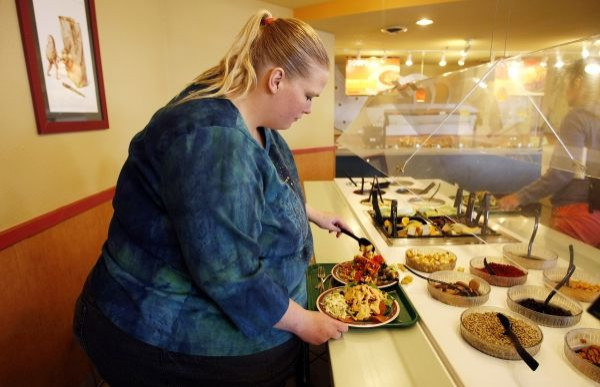Average American Woman Today Weighs Same As The Average Man In The 60s, So Imagine How Heavy Today's Men Are

Putting America’s growing obesity epidemic into a perspective that demands change has been difficult for various public health agencies. Perhaps a report published by the Centers for Disease Control and Prevention will help call attention to this country’s dirty, not-so-little secret. Findings from the report show that today’s average American woman weighs 166.2 pounds, which is nearly exactly how much the average American man weighed in the early 1960s. Clearly, this dramatic weight gain is comparable to today’s average American man, who weighs nearly 30 pounds more than he did 45 years ago.
The average man and woman today are around an inch taller compared to what their height would’ve been almost half a century ago. While this does account for some of the weight gain, there’s no denying America’s obsession with unhealthy food and a sedentary lifestyle are the driving forces of the weight problem in the United States. Researchers from the CDC attribute the average American’s expanding midsection to eating less healthy food, eating more unhealthy food, and participating in fewer hours of physical activity.
Between the early 1960s and 2010, the average American woman’s weight increased from around 140 pounds to 166.2 pounds. The years haven’t been so kind to men either, since the average American man’s weight increased from 166.3 in the early 1960s to 195.5 in 2010. The percentage of people over the age of 20 dealing with obesity has reached 35.1 percent, while the percentage of people over the age of 20 who are overweight has swelled to a staggering 69 percent. To put all of that into perspective, one out of every three adults in this country is considered obese.
As one may have expected, America’s predilection for all things unhealthy extended to its younger generations. Obesity rates increased to 20.5 percent among adolescents between the ages of 12 and 19, 17.7 percent among children between the ages of 6 and 11, and 8.4 percent among children between the ages of 2 and 5. In today’s America, one out of every five people under the age of 19 are considered obese. In the past 30 years, childhood obesity rates in the U.S. have doubled in children and quadrupled in adolescents.
To give Americans a better opportunity to improve on their own health, a recent study published in the Journal of Public Health identified six different types of obese people. By doing so, the research team hopes that doctors and patients will be able to use the information to tailor their very own weight loss program. “We are all different and different health approaches work for different people. In the future, we hope that GPs will keep in mind these six groups when offering advice to their patients,” lead research Mark Green told The Guardian.



























